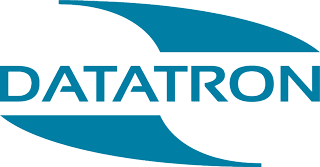ISO standards UK: What your HR team needs to know
The International Organisation for Standardisation (ISO) is a non-governmental organisation that sets technical standards for a wide range of industries and technologies. As an independent body, the ISO defines the standard for quality, safety and efficiency of all products, services and systems across the globe.
ISO standards are vital to your HR team. They help them ensure quality and compliance through documentation. But how do they do this?
Here’s what your HR team needs to know about ISO standards in the UK.
How to ensure quality and compliance with your HR documentation
Most businesses in the UK will need to follow one of the most common ISO standards: ISO 9001. This standard outlines the criteria for setting up and managing a quality management system, ensuring your business adheres to the key quality management principles. To meet this standard, your HR team must provide documentation on HR procedures and processes.
But, to truly ensure you’re meeting standards of quality, you need audit trails, version controls, analytics and reporting. With these, a good digital document management system will provide intelligent insights on the following:
1. The process for employing people at your workplace
Your HR team must identify what’s required when hiring an employee, regardless of whether it’s a full-time senior leader or a temporary contractor.
But, say you’re not attracting quality candidates. Or, perhaps your hiring process takes longer than you projected. Your document management system should provide you with a report that helps you pinpoint flaws in your approach. You can then improve your processes so you can hire the right staff, and meet stakeholder and customer needs.
2. Roles and responsibilities
Your HR team will have an outline of the roles and responsibilities for each position at your business. This includes the duties of the C-suite and HR managers, as well as supervisors, salaried employees, and even temporary workers.
However, the audit trail in your digital document system can indicate if there’s any cross over between these positions. Maybe workers from one department need access to documents not usually within their remit, meaning it might be time for HR to reexamine staff responsibilities. Or, perhaps you notice an increase in access requests for certain documentation, which could simply mean you need to give certain people permanent permissions to reduce bottlenecks and improve efficiencies.
3. Training
Whenever you hire, it’s important to adequately onboard employees to ensure everyone at your business is well-trained and set up to succeed. As part of meeting ISO 9001, it’s up to your HR team to deliver this training within the first month of employment.
Some of your training may be hands on, requiring your new employees to turn up and take part in a workshop or 1-1 coaching sessions. Other parts of your training may be less interactive but no less necessary. You might need them to read through your policies and procedures, for example.
If you want to ensure your employees undertake all your training, look to your audit trails. They’ll show which employees visited which files, as well as well as providing a time stamp for when they did so. This means should you update your policies and procedures and require that all staff review them, you can make sure that everyone has seen the most up-to-date versions.
4. The effectiveness of training
The only way to determine if your documented training is effective is to analyse it. It’s therefore important to outline a procedure for periodically evaluating the success of your training procedures and competency processes.
Your digital document management system feeds into this process, as the analytics and reporting capabilities will help you see if employees are consistently underperforming. You could then audit your onboarding processes to determine any areas that your HR team can improve upon.
5. Procedures on how to document training records
As part of meeting ISO 9001, your HR team should capture the process for planning, reporting and filing all training records.
It’s important to maintain these records. They act as evidence that you have delivered adequate training and assessed the competency of all employees. This way, if you come up against any legal action, you have a record of the training you provided, to whom, and whether they are competent.
Again, the audit trails within your document management system will be key to this. Not only will they show that the employees in question did review the appropriate files. They’ll also show when amendments were made, so if an employee hasn’t viewed the most up-to-date version, you can remediate this issue and get them up to speed.
Integrating ISO standards into your HR processes
Documenting HR procedures to meet ISO standards is not required as part of any official regulation or legislation. However, meeting these standards showcases that your business takes adequate steps to safeguard employees and operate ethically. It’s therefore important that your HR team knows how to integrate ISO standards into everyday working processes.
At Datatron, we help businesses adhere to and uphold a variety of ISO standards. This includes ISO 9001 Quality, but it also includes ISO 14001 Environmental, ISO27001 Security, and BS 10008 Legal. We understand the importance of ISO standards in continually improving processes and procedures, and promote this mindset both internally within our own company as well as to our clients. As such, we developed comprehensive document control and audit trail processes, ensuring the foundations are in place to easily document processes and capture any changes made along the way. This allows you to continually improve your processes—and to assure quality.
To learn more about how Datatron can help your business comply with ISO standards, contact us or request a free quote today.

